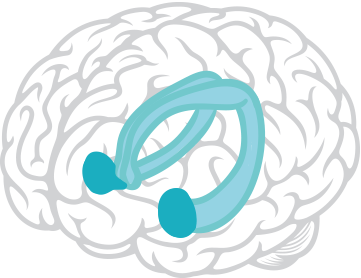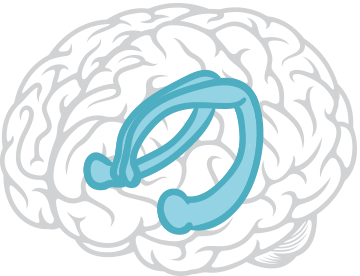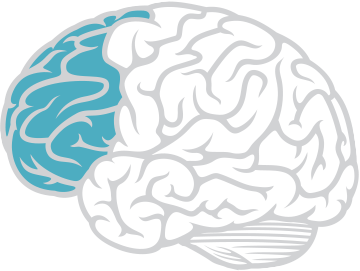EFFECTS OF TRAUMA ON THE BRAIN
Trauma affects the way cells in the brain process, interpret and react to information. It not only impacts the physical process of thinking, but thought, which drives behavior. Understanding trauma’s effect on the brain will help you understand, and address, your child’s emotions and behaviors.
Trauma primarily involves three parts of the brain: the amygdala, the hippocampus and the prefrontal cortex. Each of them has a role to play in what your child thinks and feels, and influences his or her choices of behaviors. When you understand what part of the child’s brain is driving thoughts and behavior, you will be able to determine how to provide effective and compassionate guidance.

Amygdala
Responsible for using emotions such a fear or pleasure to ensure survival. It’s the “primitive” brain.
How this Part Processes Trauma
Sends messages to the hippocampus to prepare for danger.
How this Part Interprets and Reacts to Trauma
Chooses one of these responses: flight, fight or freeze.
Hippocampus
Responsible for creating memories from sensory information and attaching them to emotions. It’s the “emotional brain.”
How this Part Processes Trauma
Releases stress hormones (cortisol) in the presence of danger.
How this Part Interprets and Reacts to Trauma
The process of making and retrieving memories is impeded.


Prefrontal Cortex
Responsible for thought; has control over planning, reasoning and organizing. It’s the “thinking brain.”
How this Part Processes Trauma
Attaches strong emotions and behaviors to specific thought patterns.
How this Part Interprets and Reacts to Trauma
May create anxiety, phobias, panic disorders, obsessive-compulsive disorders, etc.
In Crisis?
FLORIDA : Florida Council Against Sexual Violence
Crisis Hotline : 1.888.956.RAPE (7273)
UNITED STATES : RAINN (Rape Abuse Incest National Network)
Crisis Hotline : 1.800.656.HOPE (4673)
Lauren’s Kids is a 501(c)(3) nonprofit organization, tax I.D. number 26-1252588. Read our Privacy Policy. View A Guide to Hope and Healing references. Visit LaurensKids.org to learn more.
©2021, LAUREN’S KIDS. ALL RIGHTS RESERVED.
